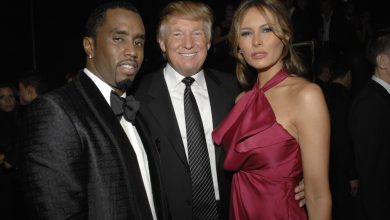Inside We Were Liars: How Prime Video Brought the Core Four to Life

The adaptation of We Were Liars by Prime Video introduces audiences to a reimagined version of the core four characters — Cadence Sinclair Eastman (played by Emily Alyn Lind), Gatwick Patil (Shubham Maheshwari), Mirren Sinclair Sheffield (Esther McGregor), and Johnny Sinclair Dennis (Joseph Zada). Based on the bestselling novel by E. Lockhart, the show brings these complex figures out of the book’s introspective lens and into dynamic, on-screen personalities.
In Lockhart’s original novel, the narrative unfolds from Cadence’s perspective, shaped by her traumatic head injury and subsequent amnesia, making her an unreliable narrator. The television adaptation gives the other characters autonomy, offering them depth and voice beyond Cadence’s recollections.
“I feel like the script brought them from the book, into more real people,” said McGregor, highlighting how the adaptation turned the liars into authors of their own story rather than just fragments of Cadence’s mind.
The Transformation of Mirren: A Defining Scene
One of the most pivotal moments for Mirren is the painting scene with Ebon (Dempsey Bryk). According to McGregor, the scene was both enjoyable and transformative:
“It’s the first time you see Mirren letting go, trusting herself, and embracing imperfection,” she explained. “Ebon helped her see that it’s okay not to be perfect.”
Johnny’s Balance of Light and Darkness
Joseph Zada, who also stars as Haymitch Abernathy in the upcoming Hunger Games: Sunrise on the Reaping (2026), discussed the contrast within Johnny’s character — a blend of light-hearted energy and hidden trauma.
“I carried it like a secret, which added energy to his character. He’s vibrant and excitable, especially during Summer Sixteen, but it’s a bit of a front,” said Zada.
See More ...
The Emotional Farewell Scene
Filming the goodbye scene with Cadence was particularly emotional for both actors:
“That last scene was real. It was the final week of filming, and I was already distraught,” said McGregor.
Zada added, “It felt like the characters were saying goodbye, but also we were saying goodbye to each other. It was deeply personal.”
Challenges in Adapting Memory-Based Characters
Bringing characters shaped by memory to life wasn’t easy. McGregor found the timeline shifts between different years particularly demanding:
“I had to map out the timeline and track the character’s growth. It’s unlike anything I’ve done before.”




